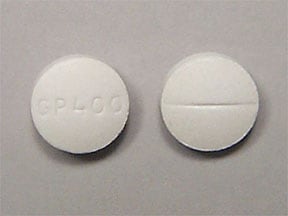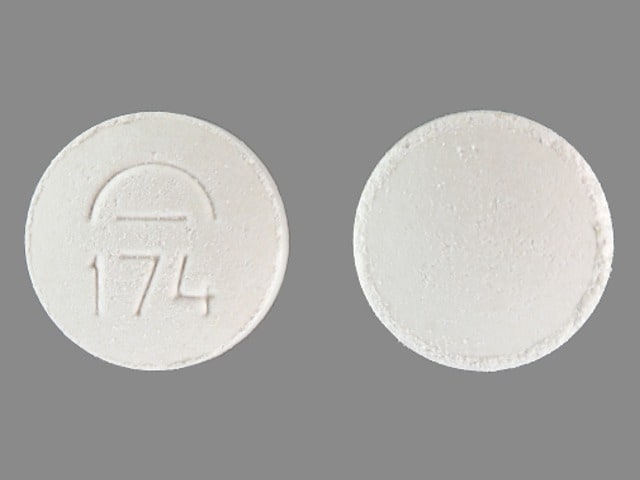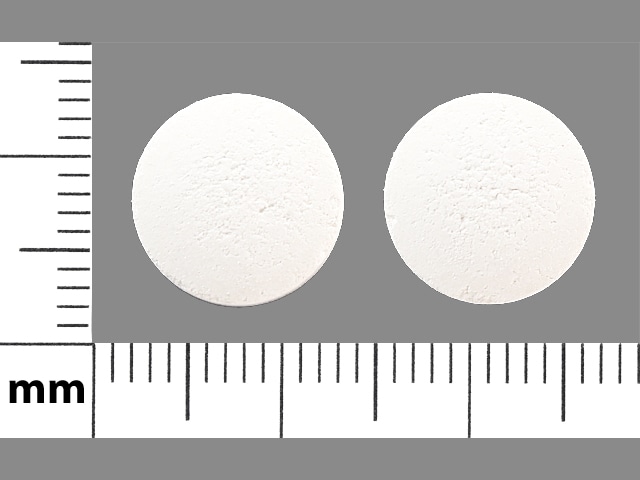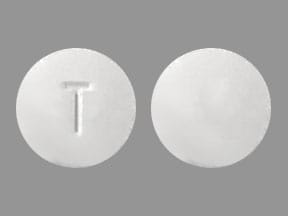Dosage Forms
Excipient information presented when available (limited, particularly for generics); consult specific product labeling. [DSC] = Discontinued product
Capsule, Oral:
Uro-Mag: 140 mg
Packet, Oral:
Magnesium Oxide 400: 240 mg (80 ea)
Tablet, Oral:
Mag-200: 200 mg [contains para-aminobenzoic acid]
MAGnesium-Oxide: 400 mg [contains soy polysaccarides]
Maox: 420 mg [contains tartrazine (fd&c yellow #5)]
Generic: 400 mg, 420 mg, 400 mg
Tablet, Oral [preservative free]:
Mag-Oxide: 200 mg [corn free, gluten free, no artificial color(s), no artificial flavor(s), starch free, sugar free, wheat free, yeast free]
Generic: 400 mg [DSC], 500 mg
Pharmacology
Mechanism of Action
Magnesium is important as a cofactor in many enzymatic reactions in the body involving protein synthesis and carbohydrate metabolism (at least 300 enzymatic reactions require magnesium). Actions on lipoprotein lipase have been found to be important in reducing serum cholesterol and on sodium/potassium ATPase in promoting polarization (eg, neuromuscular functioning).
Pharmacokinetics/Pharmacodynamics
Absorption
Oral: Up to 30%
Excretion
Urine (IOM 1997); feces (as unabsorbed drug)
Use: Labeled Indications
Dietary supplement; antacid: Dietary magnesium supplement; relief of acid indigestion and upset stomach
Contraindications
There are no contraindications in the manufacturer's labeling
Dosage and Administration
Dosing: Adult
OTC labeling:
Antacid (dosage in terms of magnesium oxide salt): Oral: One tablet (400 mg) twice daily; maximum: 2 tablets (800 mg)/24 hours
Dietary supplement (dosage in terms of magnesium oxide salt): Oral: 1 to 2 tablets (400 to 800 mg) daily; maximum: 2 tablets (800 mg)/24 hours
Dosing: Geriatric
Refer to adult dosing.
Dosing: Pediatric
Note: 1,000 mg of magnesium oxide = 603.25 mg elemental magnesium = 49.64 mEq elemental magnesium.
Hypomagnesemia: Limited data available: Infants, Children, and Adolescents: Dose expressed as elemental magnesium: Oral: 10 to 20 mg/kg/dose up to 4 times daily; usual adult dose: 300 mg 4 times daily (Kliegman 2007). Note: Achieving optimal magnesium levels using oral therapy may be difficult due to the propensity for magnesium to cause diarrhea: IV replacement may be more appropriate particularly in situations of severe deficit.
Administration
Administer at least 2 hours apart from other medications.
Dietary Considerations
Should be taken with food and at least 8 oz of water. Whole grains, legumes, and dark-green leafy vegetables are dietary sources of magnesium.
Adequate intake (AI) (elemental magnesium) (IOM 1997):
1 to 6 months: 30 mg/day
7 to 12 months: 75 mg/day
Dietary reference intake (elemental magnesium) (IOM 1997):
1 to 6 months: Adequate intake: 30 mg daily
7 to 12 months: Adequate intake: 75 mg daily
1 to 3 years: RDA: 80 mg daily
4 to 8 years: RDA: 130 mg daily
9 to 13 years: RDA: 240 mg daily
14 to 18 years: RDA:
Females: 360 mg daily
Pregnancy: 400 mg daily
Lactation: 360 mg daily
Males: 410 mg daily
19 to 30 years: RDA:
Females: 310 mg daily
Pregnancy: 350 mg daily
Lactation: 310 mg daily
Males: 400 mg daily
≥31 years: RDA:
Females: 320 mg daily
Pregnancy: 360 mg daily
Lactation: 320 mg daily
Males: 420 mg daily
Storage
Store at controlled room temperature. Protect from moisture.
Magnesium Oxide Images
Drug Interactions
Alfacalcidol: May increase the serum concentration of Magnesium Salts. Consider therapy modification
Alpha-Lipoic Acid: Magnesium Salts may decrease the absorption of Alpha-Lipoic Acid. Alpha-Lipoic Acid may decrease the absorption of Magnesium Salts. Consider therapy modification
Baloxavir Marboxil: Polyvalent Cation Containing Products may decrease the serum concentration of Baloxavir Marboxil. Avoid combination
Bictegravir: Polyvalent Cation Containing Products may decrease the serum concentration of Bictegravir. Management: Administer bictegravir under fasting conditions at least 2 hours before or 6 hours after polyvalent cation containing products. Coadministration of bictegravir with or 2 hours after most polyvalent cation products is not recommended. Consider therapy modification
Bisphosphonate Derivatives: Polyvalent Cation Containing Products may decrease the serum concentration of Bisphosphonate Derivatives. Management: Avoid administration of oral medications containing polyvalent cations within: 2 hours before or after tiludronate/clodronate/etidronate; 60 minutes after oral ibandronate; or 30 minutes after alendronate/risedronate. Exceptions: Pamidronate; Zoledronic Acid. Consider therapy modification
Calcitriol (Systemic): May increase the serum concentration of Magnesium Salts. Management: Consider using a non-magnesium-containing antacid or phosphate-binding product in patients also receiving calcitriol. If magnesium-containing products must be used with calcitriol, serum magnesium concentrations should be monitored closely. Consider therapy modification
Calcium Channel Blockers: May enhance the adverse/toxic effect of Magnesium Salts. Magnesium Salts may enhance the hypotensive effect of Calcium Channel Blockers. Monitor therapy
Calcium Polystyrene Sulfonate: Laxatives (Magnesium Containing) may enhance the adverse/toxic effect of Calcium Polystyrene Sulfonate. More specifically, concomitant use of calcium polystyrene sulfonate with magnesium-containing laxatives may result in metabolic alkalosis or with sorbitol may result in intestinal necrosis. Management: Avoid concomitant use of calcium polystyrene sulfonate (rectal or oral) and magnesium-containing laxatives. Avoid combination
Deferiprone: Polyvalent Cation Containing Products may decrease the serum concentration of Deferiprone. Management: Separate administration of deferiprone and oral medications or supplements that contain polyvalent cations by at least 4 hours. Consider therapy modification
Dolutegravir: Magnesium Salts may decrease the serum concentration of Dolutegravir. Management: Administer dolutegravir at least 2 hours before or 6 hours after oral magnesium salts. Administer the dolutegravir/rilpivirine combination product at least 4 hours before or 6 hours after oral magnesium salts. Consider therapy modification
Doxercalciferol: May enhance the hypermagnesemic effect of Magnesium Salts. Management: Consider using a non-magnesium-containing antacid or phosphate-binding product in patients also receiving doxercalciferol. If magnesium-containing products must be used with doxercalciferol, serum magnesium concentrations should be monitored closely. Consider therapy modification
Eltrombopag: Polyvalent Cation Containing Products may decrease the serum concentration of Eltrombopag. Management: Administer eltrombopag at least 2 hours before or 4 hours after oral administration of any polyvalent cation containing product. Consider therapy modification
Gabapentin: Magnesium Salts may enhance the CNS depressant effect of Gabapentin. Specifically, high dose intravenous/epidural magnesium sulfate may enhance the CNS depressant effects of gabapentin. Magnesium Salts may decrease the serum concentration of Gabapentin. Management: Administer gabapentin at least 2 hours after use of a magnesium-containing antacid. Monitor patients closely for evidence of reduced response to gabapentin therapy. Monitor for CNS depression if high dose IV/epidural magnesium sulfate is used. Consider therapy modification
Levothyroxine: Magnesium Salts may decrease the serum concentration of Levothyroxine. Management: Separate administration of oral levothyroxine and oral magnesium salts by at least 4 hours. Consider therapy modification
Multivitamins/Fluoride (with ADE): Magnesium Salts may decrease the serum concentration of Multivitamins/Fluoride (with ADE). Specifically, magnesium salts may decrease fluoride absorption. Management: To avoid this potential interaction separate the administration of magnesium salts from administration of a fluoride-containing product by at least 1 hour. Consider therapy modification
Mycophenolate: Magnesium Salts may decrease the serum concentration of Mycophenolate. Management: Separate doses of mycophenolate and oral magnesium salts. Monitor for reduced effects of mycophenolate if taken concomitant with oral magnesium salts. Consider therapy modification
Neuromuscular-Blocking Agents: Magnesium Salts may enhance the neuromuscular-blocking effect of Neuromuscular-Blocking Agents. Monitor therapy
PenicillAMINE: Polyvalent Cation Containing Products may decrease the serum concentration of PenicillAMINE. Management: Separate the administration of penicillamine and oral polyvalent cation containing products by at least 1 hour. Consider therapy modification
Phosphate Supplements: Magnesium Salts may decrease the serum concentration of Phosphate Supplements. Management: Administer oral phosphate supplements as far apart from the administration of an oral magnesium salt as possible to minimize the significance of this interaction. Exceptions: Sodium Glycerophosphate Pentahydrate. Consider therapy modification
Quinolones: Magnesium Salts may decrease the serum concentration of Quinolones. Management: Administer oral quinolones several hours before (4 h for moxi/pe/spar-, 2 h for others) or after (8 h for moxi-, 6 h for cipro/dela-, 4 h for lome/pe-, 3 h for gemi-, and 2 h for levo-, nor-, or ofloxacin or nalidixic acid) oral magnesium salts. Exceptions: LevoFLOXacin (Oral Inhalation). Consider therapy modification
Raltegravir: Magnesium Salts may decrease the serum concentration of Raltegravir. Management: Avoid the use of oral / enteral magnesium salts with raltegravir. No dose separation schedule has been established that adequately reduces the magnitude of interaction. Avoid combination
Sodium Polystyrene Sulfonate: Laxatives (Magnesium Containing) may enhance the adverse/toxic effect of Sodium Polystyrene Sulfonate. More specifically, concomitant use of sodium polystyrene sulfonate with magnesium-containing laxatives may result in metabolic alkalosis or with sorbitol may result in intestinal necrosis. Management: Avoid concomitant use of sodium polystyrene sulfonate (rectal or oral) and magnesium-containing laxatives. Avoid combination
Tetracyclines: Magnesium Salts may decrease the absorption of Tetracyclines. Only applicable to oral preparations of each agent. Exceptions: Eravacycline. Consider therapy modification
Trientine: Polyvalent Cation Containing Products may decrease the serum concentration of Trientine. Management: Avoid concomitant administration of trientine and oral products that contain polyvalent cations. If oral iron supplements are required, separate the administration by 2 hours. If other oral polyvalent cations are needed, separate administration by 1 hour. Consider therapy modification
Adverse Reactions
Frequency not defined: Gastrointestinal: Diarrhea (excessive oral doses)
Warnings/Precautions
Disease-related concerns:
- Acid indigestion/upset stomach (self-medication, OTC use): Appropriate use: For occasional use only; serious side effects may occur with prolonged use. For use only under the supervision of a physician in patients with kidney dysfunction or who are pregnant or breast-feeding. Unless directed by a physician, do not use for >2 weeks or exceed the recommended daily dose.
- Constipation (self-medication, OTC use): Appropriate use: For occasional use only; serious side effects may occur with prolonged use. For use only under the supervision of a physician in patients with kidney dysfunction, sodium- or magnesium-restricted diets, abdominal pain/nausea/vomiting, a sudden change in bowel habits which has persisted for >2 weeks, or who are pregnant or breastfeeding. If rectal bleeding develops or a bowel movement does not occur after use, discontinue use and consult health care provider.
- Neuromuscular disease: Use with extreme caution in patients with myasthenia gravis or other neuromuscular disease.
- Renal impairment: Use with caution in patients with renal impairment; accumulation of magnesium may lead to magnesium intoxication.
Pregnancy
Pregnancy Considerations
Magnesium crosses the placenta; serum concentrations in the fetus are similar to those in the mother (Idama 1998; Osada 2002)
Patient Education
What is this drug used for?
- It is used to treat or prevent low magnesium levels.
- It is used to treat heartburn and upset stomach.
- It may be given to you for other reasons. Talk with the doctor.
Other side effects of this drug: Talk with your doctor right away if you have any of these signs of:
- Severe diarrhea
- Signs of a significant reaction like wheezing; chest tightness; fever; itching; bad cough; blue skin color; seizures; or swelling of face, lips, tongue, or throat.
Note: This is not a comprehensive list of all side effects. Talk to your doctor if you have questions.
Consumer Information Use and Disclaimer: This information should not be used to decide whether or not to take this medicine or any other medicine. Only the healthcare provider has the knowledge and training to decide which medicines are right for a specific patient. This information does not endorse any medicine as safe, effective, or approved for treating any patient or health condition. This is only a brief summary of general information about this medicine. It does NOT include all information about the possible uses, directions, warnings, precautions, interactions, adverse effects, or risks that may apply to this medicine. This information is not specific medical advice and does not replace information you receive from the healthcare provider. You must talk with the healthcare provider for complete information about the risks and benefits of using this medicine.







